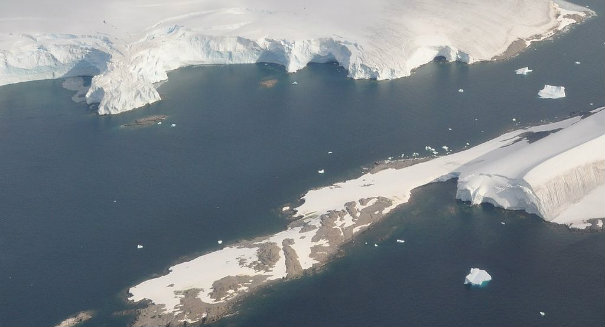
Scientists were shocked when the ice shelf, which was the size of Connecticut, splintered in half at one point and has dwindled to the size of Rhode Island.
Alarming news out of a new NASA study: one of the last remaining sections of the Larsen B Ice Shelf in Antarctica could be gone very soon.
Once a giant floating ice platform, it has been receding at a rapid rate and will almost completely disintegrate by the end of this decade, according to a CNN report.
Ice shelves are more than just pretty to look at — they also serve a vital role as an extension of glaciers that also protects those glaciers, and as the ice shelves diminish, so will the glaciers, accelerating the rise in sea level.
Ala Kahzendar, who works at NASA’s Jet Propulsion Laboratory in California, led a team that made the findings showing that the ice shelf is becoming more fragmented, resulting in huge cracks in the shelf. Kahzendar said these are big warning signs that remnant of the ice shelf will soon fall away, calling it “bad news for our planet,” according to the report.
Why? Because the Larsen B Ice Shelf has been around for 10,000 years, and its sudden disintegration shows just what man-made global warming is doing to our planet in a very short period of time.
Scientists weren’t even aware of the Larsen B ice shelf’s predicament until a sudden partial collapse back in 2002, when it splintered and disappeared in just six weeks — a massive disintegration that had never been witnessed in such a short period of time.
Scientists now blame a warm summer on the Antarctic peninsula for the collapse of the Larsen B ice shelf, as 2002 was particularly warm.
Back in 1995, Larsen B was 4,445 square miles, and dropped to a little more than half that — 2,573 — with the sudden splintering. Just a month later, it had been reduced to 1,337 square miles.
Today, it’s down to a mere 618 square miles, about half the size of Rhode Island when it had been once nearly the size of Connecticut.